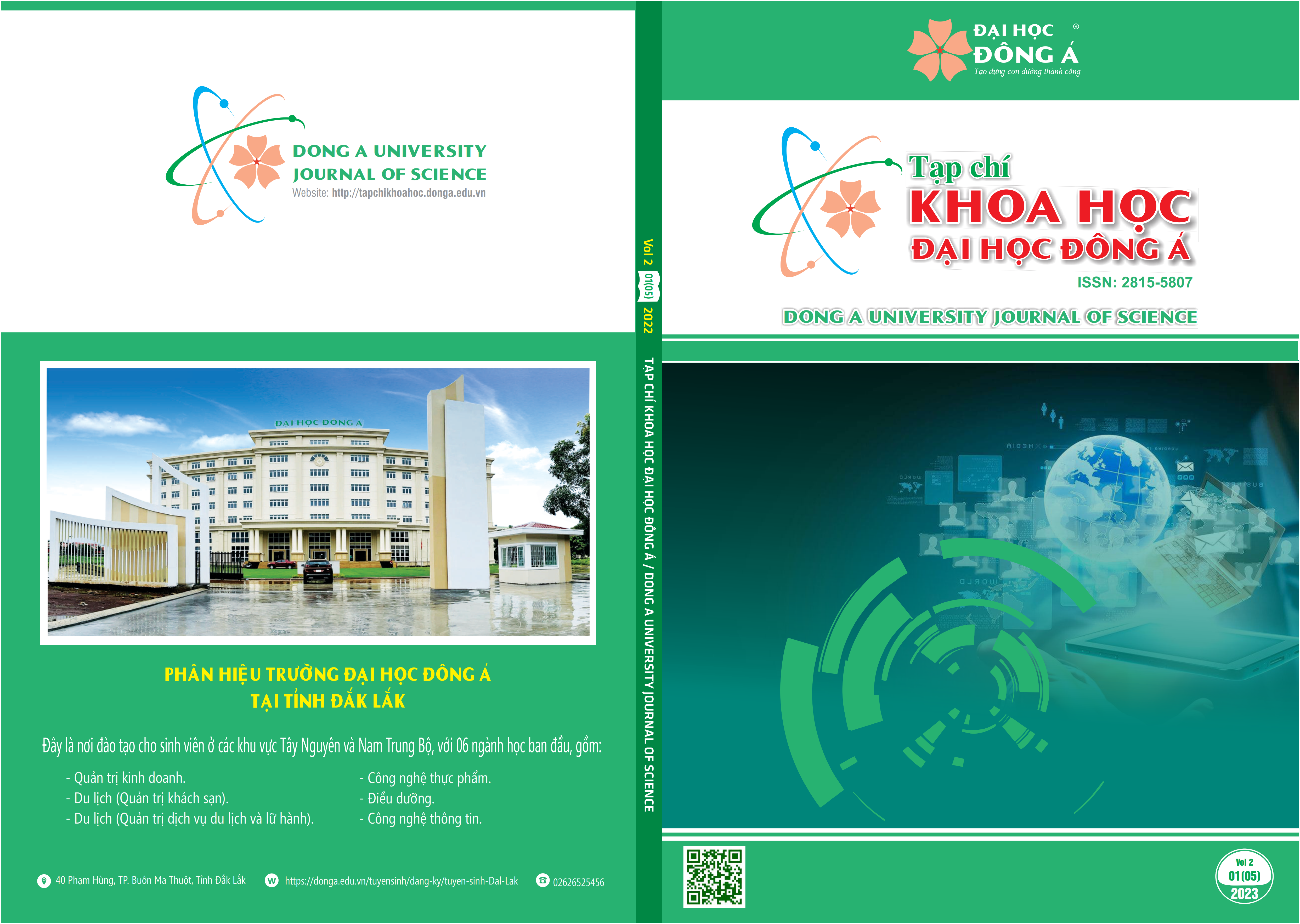Nghiên cứu sàng lọc ảo các flavonoid có khả năng ức chế protein điều hòa quá trình đường phân và apoptosis của tp53 trong con đường tăng sinh tế bào ung thư
Nội dung chính của bài viết
Tóm tắt
Protein điều hòa quá trình đường phân và apoptosis của TP53 trong con đường tăng sinh tế bào ung thư (TIGAR) được chứng minh tăng biểu hiện trong các dòng tế bào ung thư. Do đó, việc tìm kiếm các hợp chất ức chế protein TIGAR được xem là một cách tiếp cận đầy tiềm năng trong việc phát triển các phương pháp điều trị ung thư mới. Trong nghiên cứu này, chúng tôi ứng dụng phương pháp sàng lọc ảo để tìm kiếm các flavonoid có khả năng gắn kết vào vị trí xúc tác của TIGAR. Kết quả cho thấy có 124 flavonoid có ái lực liên kết với TIGAR mạnh hơn hợp chất so sánh. Trong đó, ba hợp chất có ái lực liên kết mạnh nhất là kaempferol-3-O-rutinoside, ligustroflavone và obacunone. Đáng chú ý, hợp chất có ái lực liên kết mạnh nhất với TIGAR là kaempferol-3-O-rutinoside bằng sự hình thành sáu liên kết hydro với các amino acid Thr230, Arg203, Tyr92, Asn17, Gln23, Glu89, cùng với hai tương tác hydrophobic tại amino acid của Leu100 và Lys20. Thêm vào đó, phương pháp mô phỏng động lực học phân tử cũng được sử dụng để đánh giá tính bền vững của phức hợp protein và hợp chất trong khoảng thời gian 5 ns.
Chi tiết bài viết
Từ khóa
TIGAR, flavonoid, Kaempferol-3-O-rutinoside, sàng lọc ảo, mô phỏng chuyển động phân tử
Tài liệu tham khảo
A. Periperakis. (2022). Kaempferol: Antimicrobial Properties, Sources, Clinical, and Traditional Applications. International Journal of Molecular Sciences, 23(23). doi:https://doi.org/10.3390%2Fijms232315054.
A. Scarano, M. C. (2018). Looking at Flavonoid Biodiversity in Horticultural Crops: A Colored Mine with Nutritional Benefits. Plants. doi: https://doi.org/10.3390/plants7040098.
C. R. Garcia, C. S. (2019). Dietary Flavonoids as Cancer Chemopreventive Agents: An Updated Review of Human Studies. Antioxidants, 8(5), 137-160. doi: https://doi.org/10.3390/antiox8050137.
C. Wanka, J. P. (2012). Tp53-induced Glycolysis and Apoptosis Regulator (TIGAR) Protects Glioma Cells from Starvation-induced Cell Death by Up-regulating Respiration and Improving Cellular Redox Homeostasis. The Journal of Biological Chemistry, 287, 33436 –33446. doi: https://doi.org/10.1074/jbc.M112.384578.
Clark, D. E. (2008). What has virtual screening ever done for drug discovery? . Expert Opinion on Drug Discovery, 3(8), 841-851. doi:doi: 10.1517/17460441.3.8.841.
D. Kashyap . (2017). Kaempferol - A dietary anticancer molecule with multiple mechanisms of action: Recent trends and advancements. Journal of Functional Foods, 30, 203-219. doi: https://doi.org/10.1016%2Fj.jff.2017.01.022.
D. M. Kopustinskiene. (2020). Flavonoids as Anticancer Agents. Nutrients, 12(2), 457-482. doi: https://doi.org/10.3390/nu12020457.
F. Hua. (2021). Rat plasma protein binding of kaempferol-3-O-rutinoside from Lu’an GuaPian tea and its anti-inflammatory mechanism for cardiovascular protection. Journal of Food Biochemistry, 45(7). doi:https://doi.org/10.1111/jfbc.13749.
F. Stanzione, I. G. (2021). Use of molecular docking computational tools in drug discovery. Progress in Medicinal Chemistry, 60, 273-343. doi: https://doi.org/10.1016/bs.pmch.2021.01.004.
Forli, S. (2016). Computational protein-ligand docking and virtual drug screening with the AutoDock suite. Nature Protocols, 11(5), 905-919. doi: http://dx.doi.org/10.1038/nprot.2016.051.
H. Li, G. J. (2009). Structural and Biochemical Studies of TIGAR (TP53-induced Glycolysis and Apoptosis Regulator). The Journal of Biological Chemistry, 284, 1748-1754. doi: https://doi.org/10.1074/jbc.M807821200.
Han Sung. (2021). Global cancer statistics 2020: GLOBOCAN estimates of incidence and mortality worldwide for 36 cancers in 185 countries. CA Cancer J Clin, 71, 209-249. doi: https://doi.org/10.3322/caac.21660.
Hua Li, G. J. (2009). Structural and Biochemical Studies of TIGAR (TP53-induced Glycolysis and Apoptosis Regulator). Journal of Biological Chemistry, 284(3), 1748-1754. doi: https://doi.org/10.1074/jbc.M807821200.
Institute, N. C. (2021). What Is Cancer? Retrieved from https://www.cancer.gov/about-cancer/understanding/what-is-cancer#definition, October 11.
J. Geng, X. Y. (2018). The diverse role of TIGAR in cellular homeostasis and cancer. Free Radical Research, 52(11-12), 1240-1249. doi: https://doi.org/10.1080/10715762.2018.1489133.
J. M. Xiel. (2014). TIGAR Has a Dual Role in Cancer Cell Survival through Regulating Apoptosis and Autophagy. Cancer Research, 74(18), 5137-5178. doi: https://doi.org/10.1158/0008-5472. CAN-13-3517.
J. Poyya, D. J. (2021). Receptor based virtual screening of potential novel inhibitors of tigar [TP53 (tumour protein 53)]-induced glycolysis and apoptosis regulator. Medical Hypotheses, 156. doi: https://doi.org/10.1016/j.mehy.2021.110683.
K. Bensaad . (2006). TIGAR, a p53-Inducible Regulator of Glycolysis and Apoptosis. Cell, 126(1), 107-120. doi: https://doi.org/10.1016/j.cell.2006.05.036.
K. Y. Won. (2012). Regulatory role of p53 in cancer metabolism via SCO2 and TIGAR in human breast cancer. Human Pathology, 43(2), 221-228. doi: https://doi.org/10.1016/j.humpath.2011.04.021.
Lindahl, A. H. (2020). GROMACS 2020.4 Manual (2020.4). Zenodo. doi: https://doi.org/10.5281/zenodo.4054996.
N. O'Boyle. (2011). Open Babel: An open chemical toolbox. Journal of Cheminformatics. Retrieved from https://jcheminf.biomedcentral.com/articles/10.1186/1758-2946-3-33.
O. Trott, A. O. (2010). AutoDock Vina: Improving the speed and accuracy of docking with a new scoring function, efficient optimization, and multithreading. Journal of Computational Chemistry, 31(2), 455-461. doi: https://doi.org/10.1002/jcc.21334.
Ritva R. C. Valencia, J. K. (2010). Flavonoids and other phenolic compounds in Andean indigenous grains: Quinoa (Chenopodium quinoa), kañiwa (Chenopodium pallidicaule) and kiwicha (Amaranthus caudatus). Food Chemistry, 120(1), 128-133. doi: https://doi.org/10.1016/j.foodchem.2009.09.087.
S. Basith, M. C. (2017). Expediting the Design, Discovery and Development of Anticancer Drugs using Computational Approaches. Current Medicinal Chemistry, 24(42), 4753-4778. doi: doi: 10.2174/0929867323666160902160535.
S. Brogi (2020). Editorial: In silico Methods for Drug Design and Discovery. Frontiers in Chemistry, 8. doi: https://doi.org/10.3389%2Ffchem.2020.00612.
S. Habtemariam. (2011). α-Glucosidase Inhibitory Activity of Kaempferol-3-O-rutinoside. Natural Product Communications, 6(2), 201-203. doi: https://doi.org/10.1177/1934578X1100600211.
S. Jo, T. K. (2008). CHARMM-GUI: A web-based graphical user interface for CHARMM. Journal of Computational Chemistry, 29(11), 1859-1865. doi: https://doi.org/10.1002/jcc.20945.
S. M. Nabavi. (2020). Flavonoid biosynthetic pathways in plants: Versatile targets for metabolic engineering. Biotechnology Advances, 38. doi: https://doi.org/10.1016/j.biotechadv.2018.11.005.
S. P. Leelananda, S. L. (2016). Computational methods in drug discovery. Journal of Organic Chemistry, 12, 2694-2718. doi: https://doi.org/10.3762%2Fbjoc.12.267.
Shoichet, B. K. (2004). Virtual screening of chemical libraries. Nature, 432, 862-865. doi: doi: 10.1038/nature03197.
T. T. T. Linh, T. N. (2022). Investigation of Cell Proliferation Inhibition Through Protein Tp53-Inducible Glycolysis And Apoptosis Regulator (TIGAR) Of Compounds Isolated From Goniothalamus Elegans Ast. TNU Journal of Science and Technology, 228(01), 219 - 226. doi: https://doi.org/10.34238/tnu-jst.6350
X. Lin, X. L. (2020). A Review on Applications of Computational Methods in Drug Screening and Design. Molecules, 25(1375). doi: doi:10.3390/molecules25061375.


